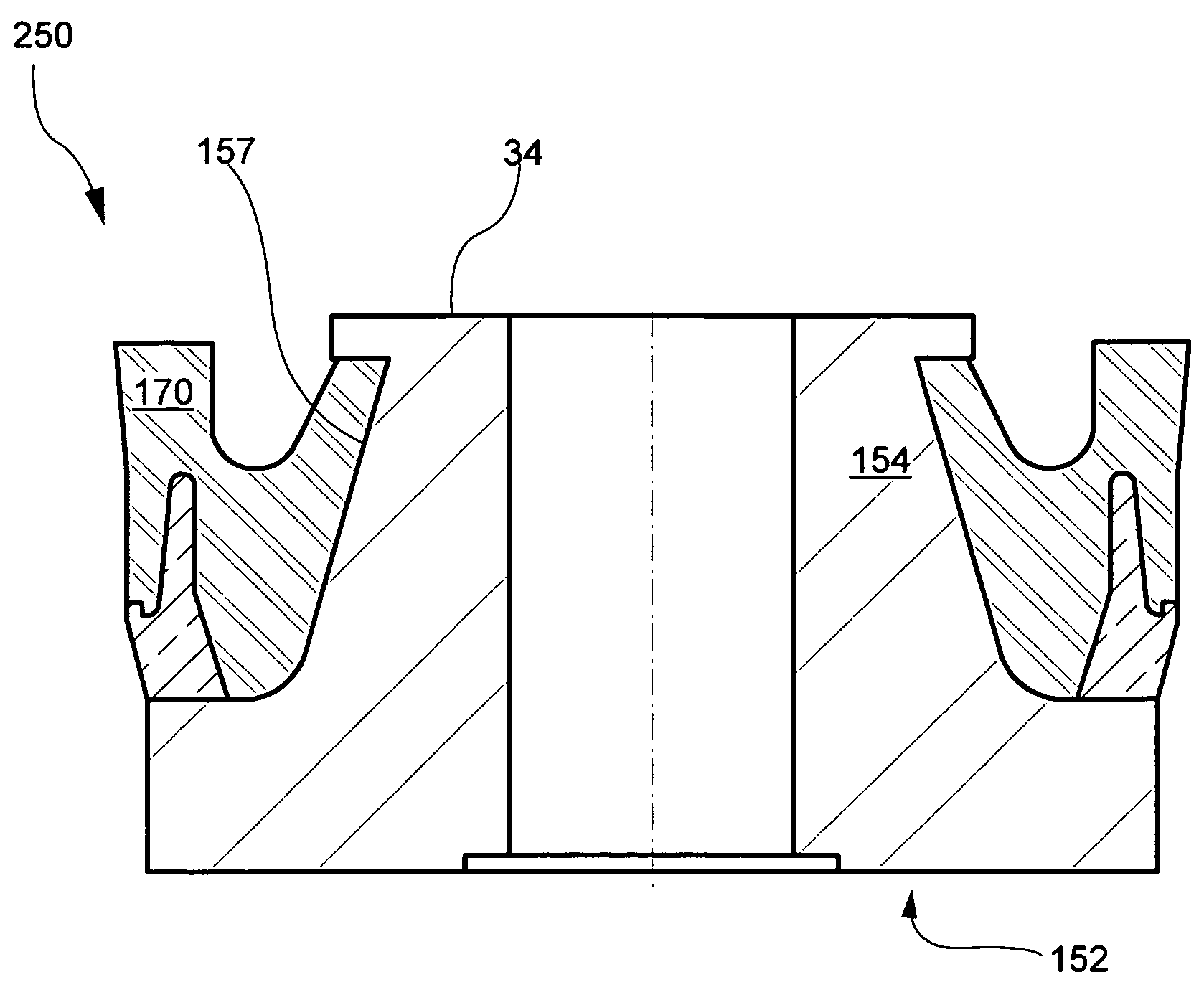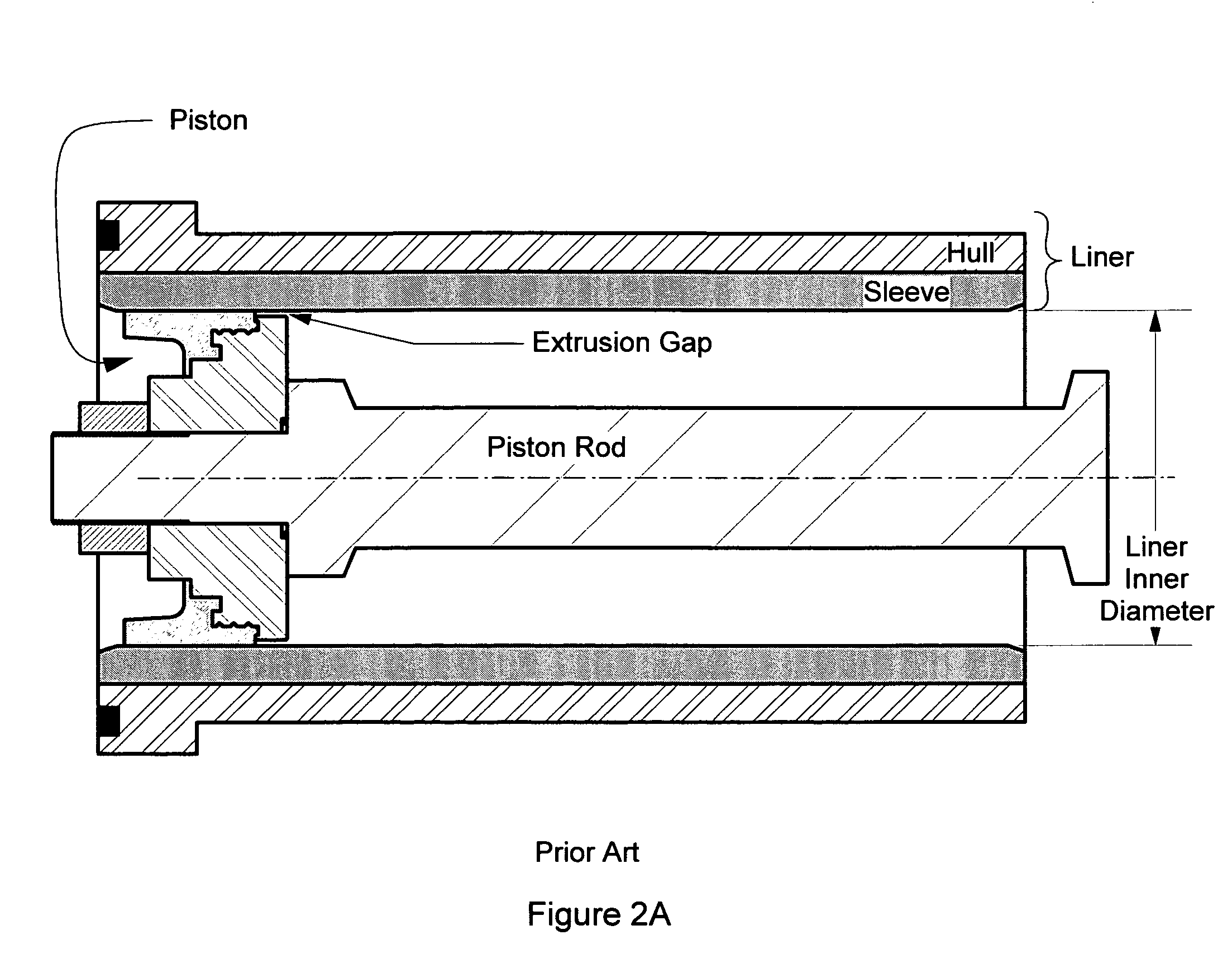High pressure pump piston
a high-pressure piston and pump technology, applied in the direction of machines/engines, braking systems, liquid fuel engines, etc., to achieve the effect of reducing the extrusion of seal elastomers, reducing the force per unit area of bearing surfaces, and facilitating four functions
- Summary
- Abstract
- Description
- Claims
- Application Information
AI Technical Summary
Benefits of technology
Problems solved by technology
Method used
Image
Examples
Embodiment Construction
[0044]FIG. 3 schematically illustrates a cross section of a high pressure piston 50 for use within a liner for a reciprocating pump. The liner has a liner inner diameter (shown schematically in FIG. 2A) and the piston 50 comprises a metallic hub 52 symmetrical about a longitudinal axis. The hub 52 comprises a proximal transverse flange 56 having a first outer diameter D1 and a core section 54 extending distally from flange 56 to core section transverse mating surface 55. Core section 54 also extends radially less than the first outer diameter D1 to a core section peripheral surface 57. Hub 52 has a central bore 51 extending longitudinally through proximal transverse flange 56 and core section 54 for accommodating a piston rod. Core section peripheral surface 57 is shown in FIG. 3 as being frusto-conical in shape.
[0045]Piston 50 further comprises a metallic or filled-polymer bearing ring 40 having a generally annular shape with a salient outer surface and surrounding at least a porti...
PUM
 Login to View More
Login to View More Abstract
Description
Claims
Application Information
 Login to View More
Login to View More - R&D
- Intellectual Property
- Life Sciences
- Materials
- Tech Scout
- Unparalleled Data Quality
- Higher Quality Content
- 60% Fewer Hallucinations
Browse by: Latest US Patents, China's latest patents, Technical Efficacy Thesaurus, Application Domain, Technology Topic, Popular Technical Reports.
© 2025 PatSnap. All rights reserved.Legal|Privacy policy|Modern Slavery Act Transparency Statement|Sitemap|About US| Contact US: help@patsnap.com



